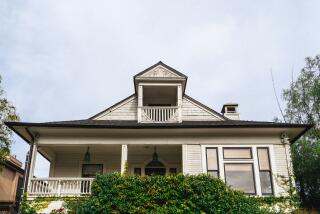Peeping for Melville in Papeete Hand me ‘Omoo’ . . . and a mai tai
On a recent South Pacific cruise aboard the Star Flyer, a sailing ship somewhat bigger than a 19th century whaler and a lot comfier, I brought along Herman Melville’s “Omoo.” Melville had launched his writing career while racketing around the Marquesas and the Society Islands in his early 20s. In that languorous climate, he might well have gone the other way -- to seed, like the classic South Pacific remittance man -- but there was no avoiding his gift. “Typee: A Peep at Polynesian Life” (1846) and its sequel, “Omoo: A Narrative of Adventures in the South Seas” (1847), made his reputation.
I had spent my senior year at Wellesley on “Moby-Dick,” committing some of it to memory and wallowing in pessimistic transcendentalism. In the years since, I’ve reread it maybe more often than any other living American (or so I like to think), and I still have my ancient Modern Library edition, with its cryptic penciled marginalia:
“His double vision parallels the whale’s,” “Wham! ambiguities -- irony -- inscrutability” and (oh, dear), “Is welcoming death the most intense form of living?”
My first actual encounter with Melville occurred a few months after graduation. I met some classmates for lunch in Boston’s Quincy Market. A lot of wine was drunk, and eventually someone suggested it might be fun to visit Melville’s house in Pittsfield, at the other end of the state, so we all jumped in the car and roared down the Mass Pike.
When we got to Pittsfield, we discovered that none of us knew where Melville had lived, but after stopping at a couple of gas stations we were directed to a large yellow farmhouse. Out we fell and Wham! into the house, where we were greeted by a surprised docent. Some instinct had kept me in the rear, and when I stepped across the threshold I was hit with a profound depression. All I could think was, “I’m in Herman Melville’s house, and I’m drunk!”
I felt his hand on top of my head, pressing me into the floorboards. I couldn’t speak; I could hardly breathe. All I could do was trail my giggling colleagues. This miserable paralysis finally lifted in the upstairs room where he wrote his masterpiece. Through the window beyond his desk, you could see Mt. Greylock, a whale-shaped hump above the trees. Downstairs off the kitchen he had built a railless deck; from it, you looked across rolling meadow. When the baby cried, or his wife nagged, he could escape out here and pace up and down -- as he undoubtedly had on the deck of the whaler Acushnet -- in peace and quiet.
I read “Typee,” his account of deserting the Acushnet in Nuku Hiva and spending time as a prisoner of the Typee tribe, around that time. Now, onboard the Star Flyer, I meant to tackle “Omoo.”
The title (according to Melville) is a Marquesan word roughly signifying “beachcomber,” and the book describes his stint on the Tahiti-bound whaler Lucy Ann, a mutiny, his incarceration in a leafy, pleasant jail in Papeete (where we embarked), and his employment, along with his raffish shipmate Doctor Long Ghost, on a potato plantation in Moorea (“The rich, tawny soil seemed specially adapted to the crop; the great yellow murphies rolling out of the hills like eggs from a nest.”).
But you can’t read on a cruise ship as easily as in a carrel in the college library. What with the mai tais, the camaraderie and afternoon naps in a deck chair, I still had a quarter-inch to go by the time we’d called at Fakarava, Rangiroa, Bora Bora, Taha’a, Raiatea, Huahine and Moorea. (“Oh! Ye state-room sailors,” Melville wrote in “Typee,” “who so pathetically relate the privations and hardships of the sea, where, after a day of breakfasting, lunching, dining off five courses, chatting, playing whist, and drinking champagne-punch, it was your hard lot to be shut up in little cabinets of mahogany and maple, and sleep for ten hours, with nothing to disturb you but ‘those good-for-nothing tars, shouting and tramping overhead’ -- what would ye say to our six months out of sight of land?”)
I did manage to make a list of what he and I shared and where our experience differed. I’d booked an inside cabin on the Star Flyer’s bottom deck, hoping to approximate his berth on the Acushnet. I had a gimpy left leg on the trip, just as Melville had as he struggled through the Marquesan jungle; it made me feel close to him. I was mutinous, refusing to snorkel. That was about it. He had had no sunblock, no mosquito repellent, no sorbet course, no piano bar, no steward to turn down his bedspread (no bedspread), no chocolates on his pillow. And yet he produced two bestsellers.
--
Authentic, so he said
“Typee” and “Omoo” are read today less as genuine travel literature than as novels, but they were swallowed whole by Melville’s 19th century audience. Melville himself insisted on their authenticity. In the preface to “Typee,” he writes that some episodes “will be sure to appear strange . . . to the reader; but they cannot appear more so to him than they did to the author. . . . He has stated such matters just as they occurred, . . . trusting that his anxious desire to speak the unvarnished truth will gain for him the confidence of his readers.”
Yet he spent not four months (as he says) but three weeks as the Typees’ captive. He supplements his observations of native life with his imagination and generally uncredited accounts from earlier travel writers, and he renders his escape in lurid and unlikely cinematic detail. In “Omoo,” he tinkers with his part in the mutiny aboard the Lucy Ann and takes liberties with descriptions of real expats in Tahiti and Moorea.
The Canadian critic George Woodcock, in his introduction to the 1972 Penguin edition of “Typee,” defends these seeming lapses by noting that the genre included, along with Richard Henry Dana’s “Two Years Before the Mast,” such obvious fantasies as Defoe’s “Robinson Crusoe” and Swift’s “Gulliver’s Travels,” and he excuses Melville’s representations as exuberant attempts to get published.
Shades of the 1960s New Journalism. Shades, for that matter, of James Frey. Still . . . can you see the great transcendentalist cowering Frey-like on Oprah’s couch? Woodcock concludes that “even when he was writing ‘Typee,’ Melville was becoming conscious of something more than a desire to be a mere writer of striking reminiscences. . . . [I]n an age when the more primitive parts of the world were still remote and romantic, he might have won an honourable place for himself among the great travel writers of the age. He chose a different role, and, if he never wrote what would be called a novel in the ordinary sense, he did become a great writer of original fiction, always basing it . . . on a ‘skeleton of actual reality.’ ”
--
Gulfs and peaks
My second encounter with Melville -- just as ghostly as the first, though maybe less dramatic -- took place as the Star Flyer entered Cook’s Bay at Moorea after a week or so of relentless sunshine. The rainy season was coming, and the island’s serrated volcanic peaks were partly obscured by brooding, soot-colored clouds; it was as if his spirit were present. I had signed up for a bumping-up-and-down off-road tour, because I wanted to see all of this island where Melville had avoided, as best he could, any actual labor on the potato plantation while storing up exotica.
Our driver, like Melville’s indigenes, was fat, copiously tattooed and wore shark’s teeth in his ears. I spoke to him in pidgin, and he replied in flawless English, having recently graduated from the University of Montana.
The first place he showed us was a marae in the hills, a sacred place, where, until the missionaries’ arrival (not so long before Melville’s), human sacrifices had been conducted. Sunshine would have rendered it meaningless -- to me, if not to the all-discerning author of “Moby-Dick,” who noted that the “serene, exasperating sunlight” shone on a stove whaleboat and its drowning seamen “as if at a birth or a bridal.”
He too had probably seen this same death-drenched, lichen-covered stone enclosure on one of his athletic forays with Zeke, the potato magnate, to hunt wild bullocks. (“At the foot of the mountain, a steep path went up among rocks and clefts, mantled with verdure.
Here and there were green gulfs, down which it made one giddy to peep.”) The bullocks, no longer wild, were still here too; the tattooed Montana graduate referred to them, along with the goats we bumped up and down past, as “barbecue.”
That evening as we left Cook’s Bay and its portentous peaks, bound for the ship’s home port in Papeete, the sea was rough and most of my fellow stateroom sailors were in their little mahogany cabinets.
I watched Moorea recede and imagined that the young Melville had been much happier here than he ever was in middle age in Pittsfield, where he wrote these lines: “For as this appalling ocean surrounds the verdant land, so in the soul of man there lies one insular Tahiti, full of peace and joy, but encompassed by all the horrors of the half-known life. God keep thee! Push not off from that isle, thou canst never return!”
--
Lippincott is a freelance writer and editor.
More to Read
Sign up for The Wild
We’ll help you find the best places to hike, bike and run, as well as the perfect silent spots for meditation and yoga.
You may occasionally receive promotional content from the Los Angeles Times.






